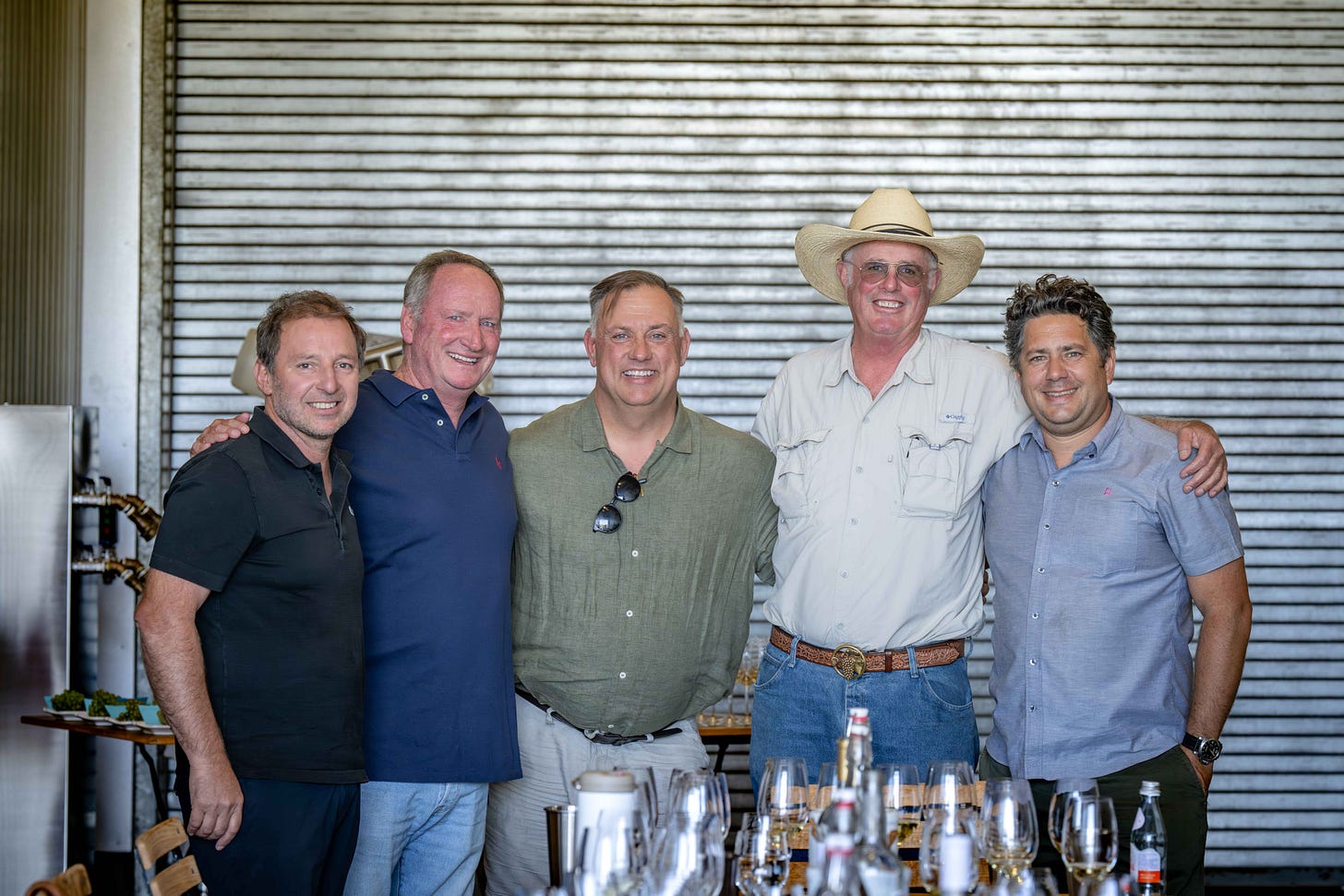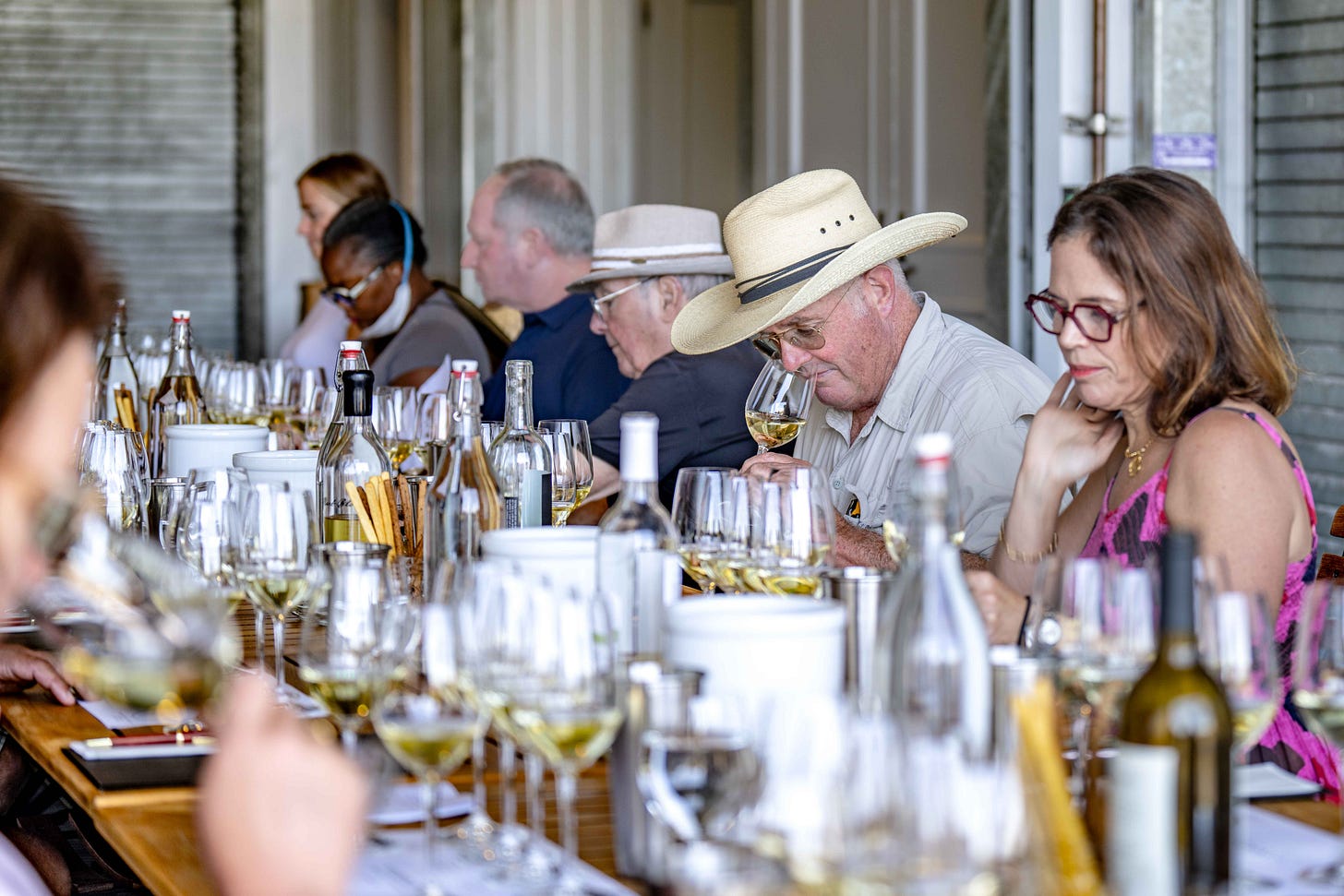NAPA VALLEY, Calif. — In a sea of Napa Valley cabernet sauvignon, Gamble Family Vineyards stands out for its long-term commitment to sauvignon blanc, and at the center of that commitment is grape-grower Tom Gamble. A third-generation farmer, Gamble comes from a family that has been in the Napa Valley since 1916. His father, George, worked the family ranches and was considered a “ranching environmentalist.” His mother, Mary Ann McGuire, helped establish the Napa Valley Agricultural Preserve in 1968. Tom started farming wine grapes in the early 1980s, buying his first vineyard in 1981 at the age of 20.

Gamble now farms 175 acres of vineyards across the Oakville, Mount Veeder, Rutherford and Yountville appellations. Following in his parents’ footsteps, he has been a leader in sustainable farming practices, helping to create the Fish Friendly Farming Initiative, Napa Green Program and Napa River Restoration Project, donating 10 acres of his own land to the cause of preserving and protecting Napa’s watershed.
More recently he’s become involved with the Napa County Resource Conservation District and the Napa Valley Vintners to launch The Million Trees Project Napa, with the hope of planting 1 million trees in Napa County. He’ll soon be Regenerative Organic Certified.
In 2005, he made his first Gamble Family Vineyards wines with winemaker Jim Close, who served as winemaker until 2022. Today, acclaimed winemakers Philippe Melka and Maayan Koschitzky make the Gamble wines. An appointment-only tasting room sits off Highway 29 in Oakville.

But first and foremost Gamble is a grower. He sells 98% of his grapes to winemakers across the Napa Valley to make their own wines. His sauvignon blanc grapes are particularly sought-after, a rare commodity in Napa Valley, where most sauvignon blanc sites have been planted over to cabernet sauvignon.
Cabernet sauvignon is widely acknowledged as Napa Valley’s No. 1 grape in terms of production and value. According to the Napa Valley Vintners, it accounts for 40% of total production and 55% of crop value. Chardonnay is second, with a good majority of it planted in Carneros.
But with sauvignon blanc the numbers tell the story. As reported in the 2022 Napa County Agricultural Crop Report, 9,283 tons of sauvignon blanc were crushed compared to 72,423 tons of cabernet sauvignon. The average price per ton for sauvignon blanc was $2,930 per ton compared to $8,819 per ton for cabernet sauvignon. Some 24,767 acres of cabernet sauvignon are planted in Napa County compared to only 2,757 acres of sauvignon blanc.
In 2013, 18,010 tons of sauvignon blanc were crushed. That number has dropped by half in a decade.
So Gamble is fighting a good fight, keeping sauvignon blanc in the ground where he could plant more cabernet sauvignon. But in the fight his grapes have become some of the most highly sought-after, the ones winemakers do everything in their power to source.
“Sauvignon blanc is truly the white wine of the Napa Valley,” said Tony Biagi, who sources Gamble sauvignon blanc for Hourglass Estate.
Gamble’s 12 acres of sauvignon blanc grapes go to 12 clients who value his farming practices and clonal selections. Half of the acreage is planted to the sauvignon Musque clone from original budwood brought over from the Loire Valley in the 1950s. The other half is planted to Preston clone, a descendent of Bordeaux.
The adjoining Confluence Block of Gamble Vineyard has clones 27, 530 and 316 from France, clone 22 from Oakville and clone 23 developed in the Russian River Valley.
Part of Gamble’s commitment to quality is the range of clones he has planted, each of them offering different charms, from the ability to hold acidity in warming temperatures to rounder texture and mouthfeel.
Julien Fayard makes his Nicholson Jones Sauvignon Blanc entirely from Gamble Vineyard clone 22. Realm Cellars’ The Bard Riverbound Sauvignon Blanc is also entirely from the Gamble Vineyard’s Preston clone grapes.
For the Gamble Family sauvignon blanc, Melka and Koschitzky blend Musque clone with clone 316, Preston and clone 530. The Gamble Heart Block Sauvignon Blanc is composed of both Preston and Musque clones.

In the end, though, for Gamble it’s always about raising the quality of his grapes, not only for his future but for the future of farming in the Napa Valley.
“Quality begets quality so I can get the price I need for the grapes to reinvest and sustain,” he said.
Virginie Boone has written about and reviewed the wines of Napa and Sonoma for more than a decade.





